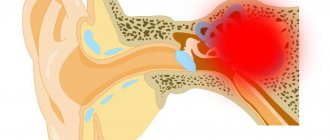Every person is endowed with five basic senses: vision, hearing, touch, smell, taste. But, depending on the characteristics of perception and processing of information, people can be divided into three main categories: visual, auditory and kinesthetic. And each person will definitely have one dominant sense organ. A lot depends on how we perceive reality.
If you ask several people to remember, for example, a forest, then one will immediately imagine a green crown of trees; another will associate the forest with birdsong; and the third will remember the fresh air and the touch of grass, leaves, cobwebs on the skin.
Also children. One child must write everything down in order to understand, another just needs to hear the information, and the third, if he doesn’t touch it, won’t remember anything.
School learning for a child is mainly a process of perception and assimilation of the information offered. The development of many important skills depends on which channel the child has.
Let's consider each of the channels of information perception.
How to understand what type a child belongs to?
I suggest taking a very useful test for children “CHANNELS OF INFORMATION PERCEPTION”
The test is intended for preschoolers and primary schoolchildren.
As you read the questions, note the traits that your child has. Then summarize and compare the results.
1. COMMUNICATION
If my child wants to say something, then...
Visual - speaks using the simplest figures of speech, pronounces some words and sounds incorrectly, and misses adverbs and prepositions.
Auditory - Uses the same figures of speech as adults, uses grammatically correct sentences, and tells carefully thought out stories.
Kinesthetic - speech is difficult to understand, speaks in short, grammatically incorrect sentences, strives to depict events instead of telling about them.
2. FAVORITE TOYS AND FREE TIME
While playing, my child...
Visual - prefers puzzles and board games, enjoys computer games or games with a calculator, learns about new things by observing.
Auditory - loves listening to audio recordings, loves books and fantasy play. learns new things by reading instructions.
Kinesthetic person - loves to play in the fresh air, enjoys being in the pool, skating rink or slide, and finds full use for almost every toy.
3. COMPLEX MOTOR SKILLS
When my child starts doing something with his hands, then...
Visual - he writes diligently, his works of art are very neat and beautiful, he can easily cut out, paint, and glue together.
Auditory - writes quite well; he talks to himself while working.
Kinesthetic - he writes with difficulty, many of his letters and numbers turn out ugly, his work is untidy.
4. SIMPLE MOTOR SKILLS
When my baby starts moving...
Visual - he considers board games better than outdoor games; he loves games with clearly established rules.
Auditory - talks more than plays; prefers games that require verbal communication; during any activity he talks to himself.
Kinesthetic - considers outdoor games better than board games, has good coordination, does not walk quietly, but rushes about.
5. SOCIAL SKILLS
When my child is surrounded by other children, then...
Visual - even in a crowd he remains alone; before taking part in the game, watches how others play; takes a long time to get used to new people.
Auditory - literally blossoms among friends; may interfere during classes because she talks a lot; often takes responsibility for others and behaves somewhat dismissively.
Kinesthetic - collectivist, but not very talkative; can cause anxiety because he interferes with his neighbors during class activities and likes to play pranks.
6. EMOTIONS
When a child is worried about something, he...
Visual - not very emotional, begins to get nervous, feeling the concern of others.
Auditory - freely talks about his feelings, can go into confrontation with others about his feelings.
Kinesthetic - emotionally dependent and easily offended; when called to order, he reacts angrily, without embarrassment or repentance.
7. MEMORY
When my child studies, he...
Visual - can reproduce letters and numbers from memory; remembers what was shown to him.
Auditory - learns best by memorizing; knows the sounds corresponding to the letters of the alphabet.
Kinesthetic person - does not remember well, is easily distracted.
8. SCHOOL SKILLS
When my child is in the classroom, he...
Visual - monitors the neatness of his clothes and the cleanliness of his workplace; in his free time he prefers construction sets, puzzles, various types of art and crafts; slowly gets used to the new situation.
Audial - his appearance is not very sloppy, but not very neat either; he has to be reminded to clean his work area; he is attentive and obedient.
Kinesthetic - does not care at all about his appearance and is often very unkempt; works in an environment of complete chaos; is able to turn over his workplace in a few minutes; is very active during games; forced to sit in one place, literally writhing and squirming.
One of the definitions - auditory (auditory perception), visual (visual perception) or kinesthetic (tactile perception) - most likely received the most marks. This channel of information perception means the way of cognition that is most characteristic of your child.
Auditory, visual, kinesthetic test. Diagnosis of the dominant perceptual modality
S. Efremtsev’s diagnosis of the dominant perceptual modality serves to determine the leading type of perception: auditory, visual or kinesthetic.
Which sense organs are most likely to “respond” to you when you interact with the outside world? What type of people are your loved ones? How do they perceive the world around them: visually, auditorily, or by touch? The Perceptual Channel technique will help you better understand yourself and others.
Each of us has a leader among our sense organs, which reacts faster and more often than others to signals and stimuli from the external environment. Similarity of types can contribute to love, discrepancy gives rise to conflicts and misunderstandings. If you know what type of people you care about and just know, it will be easier for you to convey information to them and understand what they want to tell you. For example, how do people with a certain type of perception know that someone loves them?
- Visual (visual perception) - by the way they look at it.
- Kinesthetic (tactile perception) - by the way it is touched.
- Auditory (auditory perception) - by what is said to him.
- Discrete (digital perception) - according to what logic dictates.
(Who are the discretes - see below)
Interpretation of the results
The scale on which the subject scored the most points determines the leading sensory system (leading type of perception).
Levels of the leading type of perception:
- 13-16 points – high;
- 8-12 points – average;
- 0-7 points – low.
For auditory learners,
everything that is acoustic is of great importance: sounds, words, music, sound effects. Even when they read to themselves, their lips move, which does not mean they are illiterate, it’s just more convenient for auditory learners. They very often talk out loud to themselves, and they do it with obvious pleasure with others. When communicating, they prefer to be closer to the interlocutor in order to hear him better, but at the same time they do not like to look into the face, and especially into the eyes. Auditory learners are very sensitive to words in general and to praise in particular. Naturally, better than anyone else, they recognize the shades of intonation and timbre of the interlocutor’s voice, and in speech they use many auditory metaphors: “stop creaking”; “I heard your problem”, “I can’t stand such loud melodies.” They are quite indifferent to appearance, the atmosphere in the house, the look and taste of food, but a beautiful voice can touch them to the very heart. And the droning sound of a switched-on TV behind the wall can bring you to a white heat. Auditory learners often become musicians, singers, and they make excellent lecturers and psychologists.
Visuals
instantly grasp what can be seen: colors, shapes, lines, harmony and disorder. Indeed, when processing information, they immediately transform auditory and other signals into visual images, which, in fact, they remember. It is believed that visual memory in such people is much better developed than in everyone else, which is not surprising - after all, this is what they use most often. It is very easy to determine when communicating that you are dealing with a visual person, since in speech he often uses very characteristic visual metaphors, for example: “I see this problem well”; “I look at this issue more broadly”; “This, of course, clarifies the whole matter” - and so on. In the room, the visual will try to take a place from which he can clearly see everyone and everything: it is especially important for him that the door is in his field of vision. They also love to sit by the window, especially if it offers a beautiful view. For them, appearance is of great importance, both their own and that of others. They carefully think through the interior of their home, and the appearance of food sometimes means more to them than its taste. This type of personality cannot speak if the interlocutor has turned away from him; he must “participate in the conversation.” Visual people love to attract attention, and it is about them that we can say “meet you by their clothes.” Visual people do not like to be touched, when their personal space is violated and their comfort zone is entered. The overwhelming number of artists and designers are visual people.
Kinesthetics
- these are people who translate all life events into the language of bodily sensations, taste, touch and smell. The feelings and impressions of people of this type concern mainly what relates to touch, intuition, guesswork. They listen to their inner feelings, obey them and often act correctly. For kinesthetic learners, touch is extremely important, so their communication distance is minimal - they want to touch everything, including their interlocutor. If your interlocutor twirls your button during a conversation and touches your shoulder every now and then, don’t be surprised or angry - he’s just a kinesthetic person. People of this type can also be recognized by a very characteristic manner of speaking, for example, “when I see this person, I get goosebumps,” “the atmosphere in the apartment is unbearable,” “her words touched me deeply,” “the gift was something for me.” “It’s like warm rain.” In general, my favorite word is kinesthetic – I feel that they use it appropriately and inappropriately. Kinesthetic learners love everything that gives them strong bodily sensations - sports, dancing, etc. As for professional preferences, there are many kinesthetics among circus performers, dancers, and massage therapists.
Digital
(aka
discrete
) is a very unique and quite rare type, which is characterized by a special perception of the world. Expressions of emotions, conversations about feelings, colorful descriptions of pictures of nature, etc. It’s hard to expect from discretes. This type is focused primarily on logic, meaning and functionality. In a conversation with a discrete person, one gets the impression that he doesn’t seem to feel anything, but he knows a lot, and even more - he strives to find out, comprehend, understand and sort it out. But this is not true at all! People with a digital channel of perception are incredibly sensitive and vulnerable. Among representatives of this type there are especially many chess players, programmers, as well as all kinds of researchers and scientists. In their vocabulary there are often expressions: “where is the logic here?”, “we need to analyze the situation,” “so, by the method of elimination, we find out...” Since discrete individuals perceive the world through logical comprehension, it is worth communicating with them precisely with the help of logical arguments, preferably also supported by statistical data.
| Features | Auditory type |
| Method of obtaining information | Through hearing - in the process of talking, reading aloud, arguing or exchanging opinions with your interlocutors |
| Perception of the surrounding world | They feel the need for continuous auditory stimulation, and when it is quiet around, they begin to make various sounds - they purr under their breath, whistle or talk to themselves, but not when they are busy studying, because at these moments they need silence; otherwise they have to tune out the annoying noise that comes from other people |
| What do you pay attention to when communicating with people? | The person's first and last name, the sound of his voice, the manner of his speech and the words he said |
| Speech | Describe sounds and voices, music, sound effects and noises that can be heard in their environment, and also retell what other people say |
| Eye movements | Usually they look left and right and only occasionally and briefly look into the eyes of the speaker |
| Memory | Remember conversations, music and sounds well |
| Features | Visual type |
| Method of obtaining information | Through vision - through the use of visual aids or directly observing how the relevant actions are performed |
| Perception of the surrounding world | Receptive to the visible side of the surrounding world; have a burning need to make the world around them look beautiful; easily distracted and anxious when faced with clutter |
| What do you pay attention to when communicating with people? | On a person’s face, his clothes and appearance |
| Speech | Describe the visible details of the situation - color, shape, size and appearance of things |
| Eye movements | When thinking about something, they usually look at the ceiling; when they listen, they feel the need to look into the eyes of the speaker and want those who listen to them to also look into their eyes |
| Memory | They remember well visible details of the situation, as well as texts and teaching aids presented in printed or graphic form. |
| Features | Kinesthetic type |
| Method of obtaining information | Through active movements of skeletal muscles - participating in outdoor games and activities, experimenting, exploring the world around us, provided that the body is constantly in motion |
| Perception of the surrounding world | They are accustomed to the fact that activity is in full swing around them; they need room to move; their attention is always focused on moving objects; They are often distracted and annoyed when other people cannot sit still, but they themselves need to constantly move |
| What do you pay attention to when communicating with people? | On how the other behaves; what does he do and what does he do |
| Speech | Words denoting movements and actions are widely used; they talk mainly about business, victories and achievements; as a rule, they are laconic and quickly get to the point; often use their body, gestures, pantomime in conversation |
| Eye movements | They are most comfortable listening and thinking when their eyes are down and to the side; they practically do not look into the eyes of the interlocutor, since it is this position of the eyes that allows them to learn and act at the same time; but if there is a bustle near them, their gaze is invariably directed in that direction |
| Memory | They remember their own and others’ actions, movements and gestures well. |
Informal version of the test
If your friend or you do not have the opportunity or time to take the C Efremtsev test, then you can determine the main channel of perception as follows. Ask him (or yourself) how he (you) would like to spend his vacation (abstract vacation, “dream vacation”).
Now watch in which direction he (you) averted his eyes before formulating an answer. Depending on the direction of gaze, we can tell what images a person creates: visual, auditory or kinesthetic (tactile).
1. If the gaze is directed upward, then this indicates the formation of visual images, drawing a picture - visual. 2. If the gaze is directed downward, this means that the person is trying to listen to his feelings and sensations - kinesthetic. 3. If the gaze is directed straight, either to the left or to the right, without moving up and down (as if towards the ears), then this indicates the formation of sound images - auditory.
For accuracy, try to find answers to more questions. They can be anything, for example: “How would you like to celebrate the New Year?”, “What are your plans for the coming weekend?”, “Remember the most pleasant event in the last month,” etc.
To make your final decision, carefully analyze the answers to the questions asked. For example, if to the question: “Where is the best place to spend a vacation?”, a person uses the following epithets when answering:
1. Azure sea, yellow sand, mountain view from the window, bright sun, tanned girls in swimsuits and other visual images, then probably the person is a visual person. 2. Warm breeze, the smell of the sea, hot sand, heat on the body from tanning, relaxation, spa hotel, etc., then most likely the person is a kinesthetic person. 3. The sound of waves, silence at dawn, the cry of seagulls, fiery music, the whistle of the wind, etc., then a person is an auditory person.
It is extremely difficult for visual learners to remember information by ear, and a kinesthetic learner is unlikely to be able to appreciate your new hairstyle (a visual learner will), but perfume or the ability to do a massage is easy!
An auditory/kinesthetic learner, turning to the visual to better convey information, can say something like: “For me, your verbal/tactile silence is like a black room for you, impenetrable darkness where you can’t see anything.”
Visual child
Visual learners instantly remember faces, but often forget first and last names. They easily find their way even to places they have only been to once. The speech of visual children is filled with the words “look”, “have you seen”, “beautiful”, “bright”, “red”, “green”... They think in images. In the process of thinking, pictures from the past, ideas about the future, images appear in their heads, and imaginary situations are played out. Little visual learners have a wild and lively imagination.
Children with visual perception do not like hugs and kisses, but they will willingly talk to you about adult topics. They usually look older than their age because they keep themselves aloof and a little arrogant. They love to lecture their elders and quote phrases “from TV,” which they adore. They sense your mood and desires by your facial expressions, but do not always let you understand this (of course, in their own interests). Visual learners have excellent visual memory and fine motor skills are well developed, but they have difficulty understanding verbal instructions and often repeat tasks. Quickly remembers color, shape, size. They find it easy to tell stories based on pictures. Their eyes are always searching for information.
Visual children begin to write in block letters early and can read quite fluently by the time they reach school. In raising a visual student, it is necessary to pay attention to the development of speech (he is taciturn), sociability (the ability to communicate), and physical coordination. Visual students remember the teacher’s explanations more easily if they are duplicated on the school board or on diagram posters: it is easier for them to see and visually remember the word than to understand the rule why they should write it that way. Visual aids, illustrations, the use of colored pencils: sketch, reproduce, highlight - all this contributes to better assimilation of the material.
Allow your child to use colored pens to highlight important points in the book. As visual learners, it is vital for them to have a draft in which they can draw and draw.
How to work with visual children?
Visual learners need to be shown graphs, pictures, photographs. They will remember the rule more easily if they see it written on a poster in bright letters. When creating visual images, teachers are recommended to use different colors and fonts. Highlight the most important things in a bright, rich color, make the font larger - this will make it easier for the visual to perceive the information.
Draw, underline the necessary information, use crayons and markers, allow children to copy from the board “as is”, allow them to use colored pens, pencils and highlighters. Visuals work well with flashcards and other handouts.
When explaining new material to a visual person, it is highly undesirable to stand opposite. Such children do not tolerate close contact well and do not like having their view blocked. If you have more visual learners in your class, it is best to explain the topic by standing next to them or slightly behind them.
By the way, it is visual learners who like to sit at the first desk, so let such children take these places.
Kinesthetics
For kinesthetic learners, the world opens up through sensations and touches.
The words they often hear in their speech are: feel, feel, hot-cold, soft, comfortable, etc. Kinesthetic learners' speech is slow and measured; during a conversation they often touch their face or fidget with something in their hands.
In the classroom, such children are easily recognized by their activity. It is kinesthetics who are often classified as “restless, hyperactive.” If such a child is brought under control, within a few minutes he begins to fidget, twitch his legs, tap his fingers, chew a pen or pencil, and tug at his hair.
Kinesthetic children usually have difficulty learning to read and often cannot remember and apply even the simplest rule. But it is kinesthetic learners who make the best actors, athletes and dancers.
Auditory child
These children remember in great detail who said what, where, when, and in what words. They instantly “grab” first names and patronymics, but easily forget faces. Their greatest pleasure is conversation; they will never be interested in a book if they have someone to talk to. All secrets and news immediately become known to them. No, they are not specifically trying to find out what you are talking about, it’s just that their hearing is much better developed than others. Auditory children have a large vocabulary, but may lag slightly behind their peers in the development of skills related to visual (finding differences in pictures) and motor (the ability to deftly climb a slide, run quickly and for a long time) perception.
In their speech, auditory learners often use the words “listen”, “hear”, “noisy”, “quiet”.
Such children think through internal speech, mentally pronouncing their own remarks and the interlocutor’s answers, assuming what kind of voice he will have, what intonation. They love the radio. They like television programs that are dominated by “words” rather than “pictures.” They are very attentive in conversations. In a conversation with an auditory speaker, it is useful to use vocal features: pauses, intonation, volume.
In primary school, auditory learners often study well; their strength is developed auditory memory and speech, but they often have difficulties with spelling and drawing. In middle school, auditory learners who are accustomed to using their memory usually demonstrate significantly less success. During this period, you should pay more attention to reading, pronouncing, and repeating the rules out loud. Auditory learners are musical and easily grasp foreign languages. They are recommended to use audio materials first. When doing homework, such children may move their lips and talk to themselves. Another feature of auditory learners that is associated with difficulties at school is the ability to tell only from the very beginning.
How to work with auditory learners?
The way to the heart of an auditory child is through sounds. Do you want to distract him from trifles and extraneous matters? Play an unfamiliar melody (he will start singing along with the familiar one). These children better perceive information that comes against the background of musical accompaniment. You won’t understand how you can do your homework to the roar of rock music or Timati’s recitative. And for the auditory, music overshadows all extraneous sounds and allows you to focus on the main thing. But there are also auditory learners who can only work in silence, and any sounds will greatly distract them.
You can play music during lessons for auditory learners. A new topic can be told with musical accompaniment.
Auditory learners are also very responsive to the timbre of your voice and the rhythm of your speech. Therefore, it is good if the teacher, while explaining a new topic, highlights important intonation points and new rules.
For better memorization, the auditory learner needs to speak the information received. If there are more children in your class with an auditory perception of the world around them, take note of teaching techniques from elementary school: repeating out loud with the whole class, in rows, in turns, individually.
Auditory learners can be encouraged to use audio books and audio courses. This will allow you to work more efficiently.
Visuals
Visual learners are children who perceive the world through their eyes.
Their speech often contains figurative expressions related to vision: look, see, bright, colorful, names of colors, apparently. Visual learners are very attentive to others, they will be the first to determine what has changed in the room or in the picture, and the first to pay attention to the new things of their classmates. They think in images, so they often have artistic talent, they draw, sculpt, and design well.
According to psychologists, about 60% of children have developed visual memory. So it’s no wonder if the majority of the class turns out to be visual learners.








